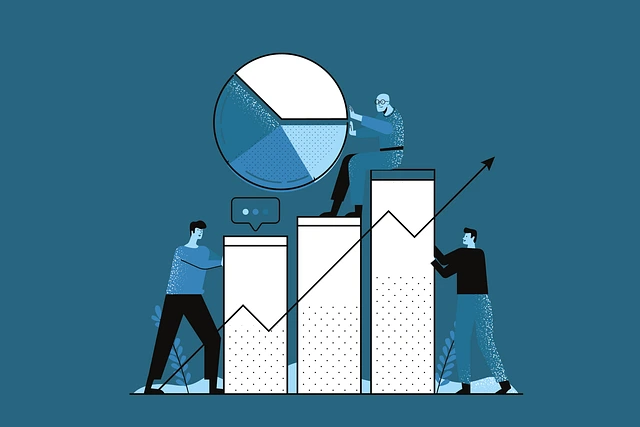Hotel pricing automation helps hotels stay competitive and agile by using AI to update room rates in real time. It reads demand signals, competitor behavior, and booking patterns to recommend or apply the right price at the right time. The result is better revenue, greater efficiency, and more informed decision-making for teams of any size.

What Is Hotel Pricing Automation?
Hotel pricing automation is the use of AI to adjust room rates based on live market conditions. These systems monitor everything from booking patterns to competitor rates to local events and automatically make pricing decisions to help hotels stay ahead. Instead of manually updating rates day by day, pricing automation continuously evaluates and adjusts based on real demand and performance signals.
This type of automation takes the pressure off revenue managers and general managers, especially in independent or boutique hotels, where time and resources are often limited. It enables pricing decisions that are informed, consistent, and always aligned with current trends.
How AI Enhances Hotel Pricing?
Artificial intelligence brings precision and scale to pricing decisions that previously relied on instinct or outdated data. These systems track booking windows, cancellation rates, pace, competitor movements, events, and more. They synthesize these signals in real time and generate pricing updates that reflect what is actually happening in the market.
Machine learning models also evolve over time. They get better the more data they process, which means hotels benefit from smarter recommendations without needing to manage complex algorithms or interpret raw analytics.
Manual Pricing vs Automated Pricing
Manual pricing depends on human input and often involves daily spreadsheet reviews, competitive rate checks, and guesswork. While experienced revenue managers can make solid decisions, they can still miss key shifts in demand or react too late. Manual systems also leave room for inconsistency across direct and third-party booking platforms.
Automated pricing removes this burden. AI tools adjust rates as conditions change and apply those updates across connected channels. This helps hotels stay competitive even when the market shifts quickly, and it keeps pricing aligned with both revenue goals and guest expectations.
How AI-Driven Hotel Pricing Works?
AI-powered pricing tools pull in data from your property management system, booking engine, channel manager, and public sources like OTA pricing or event calendars. They assess current conditions, compare them to historical data, and recognize patterns in traveler behavior.
For example, if demand suddenly rises for an upcoming weekend, the system detects that shift and adjusts rates accordingly. Pricing automation is not just about responding to competitors or trends. It is about anticipating them and making decisions while the opportunity still exists.
The best tools also offer control. Hotels can set rules and rate fences, define minimum and maximum limits, and customize how automation behaves in different seasons or situations.
Benefits of Hotel Pricing Automation
Hotels using automated pricing typically see measurable revenue improvement, especially in volatile or fast-moving markets. Real-time adjustments allow them to take advantage of last-minute demand and avoid missed opportunities caused by outdated rates.
Beyond revenue, automation saves time. Hotel teams can spend less time managing rates and more time focusing on strategy, guest service, and performance improvement.
It also enhances consistency. With automated tools, pricing remains aligned across all platforms, reducing the risk of parity issues or undercutting your own direct bookings.
Perhaps most importantly, automation builds confidence. Instead of second-guessing rate decisions or reacting too late, hotels can rely on data to support their strategy.
Who Benefits Most from Pricing Automation?
Pricing automation can support a wide range of hotel types and structures. Independent hotels and boutique properties, often running without full revenue teams, gain back valuable time while maintaining control over pricing strategy. Multi-property operators can use automation to streamline rate management across their portfolio. Even experienced revenue managers use automation to enhance their work by letting the system handle routine updates while they focus on broader goals.
Whether the hotel is new to dynamic pricing or already managing multiple tools, automation simplifies the process and drives better results.
How ampliphi Supports Hotel Pricing Automation?
ampliphi is built to help hotels modernize their revenue strategies with AI-powered automation that is practical and accessible. It continuously analyzes demand, market signals, and booking patterns to generate accurate pricing recommendations that are ready for action.
The platform integrates with existing property management systems and booking channels, ensuring a seamless connection between data and pricing updates. Hotels can easily set pricing guidelines, track results, and adjust their approach without having to manage complex technology.
In addition to pricing automation, ampliphi connects these insights with content performance and marketing signals, giving hotels a complete view of what is driving demand and conversion. This approach allows hotel teams to understand not only when to adjust rates but why certain campaigns or content may be outperforming others.
For hotels looking to grow with confidence, ampliphi brings clarity and performance into one platform.
Getting Started With Hotel Pricing Automation
The first step is to review your current systems and make sure your data is flowing properly between your PMS, RMS, and booking channels. A clean data foundation makes automation more accurate and reliable.
Next, choose a pricing automation tool that is designed for hotels, not just general revenue platforms. Look for intuitive interfaces, hospitality-focused support, and a proven ability to adapt to your type of property.
Once in place, define clear pricing boundaries and business rules. These give you the flexibility to stay aligned with your brand while letting the system do its job. Teams should also review reporting regularly to make sure performance is on track and adjust strategies as needed.
Automation does not replace your expertise. It enhances it. It gives hotel teams the bandwidth to lead pricing decisions without needing to manage every rate by hand.
Frequently Asked Questions
What is hotel pricing automation?
Hotel pricing automation is the use of AI or software to adjust room rates based on demand, booking trends, competitor pricing, and other real-time data. It replaces the need for daily manual rate updates and helps hotels stay competitive with less effort.
How does AI automate hotel pricing?
AI collects and analyzes data from your booking systems, local events, and competitor rates. It looks for patterns and makes decisions based on what is happening in the market. The system can apply these rate changes automatically or suggest them for approval.
Can small hotels use automated pricing tools?
Yes. Many tools, including ampliphi, are built with smaller, independent hotels in mind. These platforms are user-friendly, do not require full revenue teams, and still provide the insights and control needed to grow profitably.
Is dynamic pricing the same as automated pricing?
Not exactly. Dynamic pricing refers to the strategy of changing prices based on demand. Automated pricing is the technology that applies that strategy consistently and at scale. Automation allows dynamic pricing to happen without constant manual work.
What are the risks of automating hotel pricing?
The biggest risk is setting up the system without clear rules. To avoid pricing errors, hotels should define their minimum and maximum rates, blackout periods, and override options. With the right setup, automation stays aligned with business goals and brand standards.




